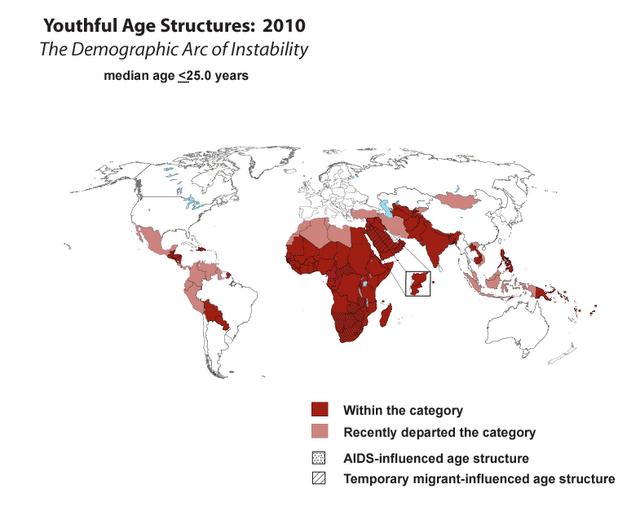Yearly archive for 2010.
Show all posts
-
GMHC 2010: Empowering the Next Generation
›“We do not need new legislation… we need affordable, effective, and scalable solutions,” said Shn Gulamnabi Azad, Minister of Health, India, at the opening ceremony of the first-ever Global Maternal Health Conference in New Delhi. Co-hosted by the Maternal Health Task Force and the Public Health Institute of India, this three-day technical meeting builds upon the momentum of Women Deliver and the G8 summit by bringing together 700 researchers, program managers, advocates, media, and young people to exchange ideas, share data, develop strategies, and identify solutions for reducing maternal mortality.
In order to reduce India’s maternal mortality rates, Azad called for the repositioning of family planning programs to include maternal and child health and not limit the scope of services to population control as historically executed. Improving family planning and maternal health services must also address the reproductive health needs of adolescent girls, and India is currently developing a new ministry that will target gender inequality, poverty, early child marriages, as well as other critical health issues important to young girls such as the dissemination of sanitary napkins.
“Although the legal age of marriage is 18, there are districts in India where 35 percent of the population is married between the ages of 15-18,” said Azad. During the side event “Adolescent Girls: Change Agents for Healthy Mother and Child,” technical experts such as Anil Paranjap of the Indian Institute of Health Management presented evidence that girls who marry between 15-18 are five times more likely to die during childbirth than women in their early 20’s.
“We still have deep-rooted subordination that makes it very difficult for young women to realize their sexual and reproductive health rights,” said Sanam Anwar with the Oman Medical College. Interventions such as the UDAAN project – a private-public partnership between the Center for Development and Population Activities (CEDPA) and the Government of India – demonstrate promising solutions for empowering young people through the use of existing infrastructure. In collaboration with teachers, parents, principals, and students, this project successfully increased leadership skills and improved youth knowledge on menstruation, health, friendship, peer pressure, early marriage, and reproductive health, said Sudipta Mukhopadhyay of CEDPA.
Empowering “young people” to improve maternal health also requires that the community support committed new thinkers and future leaders. The Young Champions of Maternal Health Program is a unique and refreshing group of young professionals from 13 countries dedicated to improving maternal health, and I look forward to learning how this new energy will further the maternal health agenda.
Originally posted at Maternal Health Task Force, by Calyn Ostrowski of the Woodrow Wilson International Center for Scholars, Coordinator of the Maternal Health Dialogue Series in partnership with the Maternal Health Task Force and UNFPA.
Photo Credit: “Indian Girl” courtesy of flickr user Jarek Jarosz. -
‘NSB’ Blogs from the 2010 Global Maternal Health Conference in New Delhi
›The 2010 Global Maternal Health Conference kicked off today, perhaps fittingly, in India – one of the world’s fastest growing nations but one that also faces serious reproductive health challenges. The Wilson Center’s Calyn Ostrowski is in New Delhi for the conference and will be providing updates to The New Security Beat throughout the week.
Those interested can also find a schedule of events and list of participants on the conference website as well as live webcasted events on the main page. Stay tuned!
Photo Credit: “Mumbai, India, November 2009” courtesy of flickr user travelmeasia. -
The Complexities of Decarbonizing China’s Power Sector
›August 27, 2010 // By Wilson Center StaffOver the past year, there have been a series of new initiatives on U.S.-China energy cooperation. These initiatives have focused primarily on low-carbon development, and have covered everything from renewables and energy efficiency to clean vehicles and carbon capture and storage. Central to the long-term success of these efforts will be strengthening the U.S.’s incomplete understanding of China’s electricity grid, as all of the above issues are inextricably linked to the power grid itself.
As both the United States and China try to figure out how to decarbonize their power sectors with a mixture of policy reform and infrastructure development, China’s power-sector reforms could present valuable lessons for the United States. At a China Environment Forum meeting earlier this summer, Federal Energy Regulatory Commission (FERC) Chairman Jon Wellinghoff joined power sector experts Jim Williams, Fritz Kahrl, and Ding Jianhua from Energy and Environmental Economics (E3) to address the subject, discussing gaps related to electricity sector analysis and presenting research on decarbonizing China’s electricity sector.
Addressing Shared Challenges
Chairman Wellinghoff kicked off the presentation with an overview of the similarities and differences in the U.S. and Chinese power sectors. Wellinghoff stressed that both countries face common obstacles in expanding renewables, namely that wind- and solar-energy sources are located inland, far away from booming coastal cities where energy demand is highest. He added that market and regulatory incentives to integrate renewables into grids are currently insufficient.
However, Wellinghoff also made the point that each side has comparative advantages. For instance, while China has superior high-voltage grid transmission technologies, the United States has been developing advanced demand-side management practices and markets to spur energy efficiency and renewable integration in the power sector. Wellinghoff argued that mutual understanding of each others’ power sectors is important for trust-building and effective cooperation, and can result in net climate and economic benefits for both sides.
Achieving these benefits will not be easy. E3’s Jim Williams noted that the Chinese power sector is currently in transition, a process that is producing some increasingly complicated policy questions. How these questions are answered has the potential to drastically shift the outlook for China’s carbon emissions. For instance, if the United States can help push China’s power sector to become less carbon-intensive, there could be substantial benefits for lowering global greenhouse gas emissions.
One of the major issues at the moment is assessing the cost-benefit analysis of renewable and low-carbon integration and trying to ascertain what the actual cost of decarbonizing the power sector would be. Due to a lack of “soft technology” — analytical methods, software models, institutional processes, and the like — policymakers in China still do not have a good sense of what level of greenhouse gas reductions could be achieved in the power sector for a given cost.
More Intensive Research Needed
Fritz Kahrl and Ding Jianhua, also from E3, went on to explain that for China, as with the United States, the underlying issues of how to decarbonize the power sector will demand considerable quantitative analysis. The United States has more than three decades of experience with quantitative policy analysis in the power sector, driven in large part by regulatory processes that require cost-benefit analysis. In China, policy analysis in the power sector is still at an early stage, but there is an increasing demand among policymakers for this kind of information.
For instance, over the past five years, China’s government has allocated significant amounts of money and attention to energy efficiency. However, standardized tools to assess the benefits and costs of energy efficiency projects are not widely used in China, which has led to a lack of transparency and accountability in how energy efficiency funds are spent. This problem is increasingly recognized by senior-level decision-makers. Drawing from its own experience, the United States could play an important role in helping Chinese analysts develop quantitative approaches for power sector policy analysis.
Pete Marsters is project assistant with the China Environment Forum at the Woodrow Wilson Center.
Photo Credit: “Coal Power Plant (China),” courtesy of flickr user ishmatt. -
The Future of Sub-Saharan Africa’s Tentative Fertility Decline
›August 25, 2010 // By Richard CincottaIn her recent post on The New Security Beat, Jennifer Sciubba argues that the medium-fertility variant projection published in the UN Population Division’s biennial projections — the source of most future data published in the Population Reference Bureau’s 2010 World Population Data Sheet — forecasts an unrealistically low total fertility rate (TFR) for sub-Saharan Africa in 2050, at a rate of 2.5 lifetime childbirths per woman.
-
Derek S. Reveron, The New Atlanticist
When National Security Overlaps With Human Security
›August 24, 2010 // By Wilson Center StaffThe original version of this article appeared on the Atlantic Council’s New Atlanticist blog. By Derek S. Reveron.
For the second time this year, naval forces have been involved in major operations that have little to do with combat at sea. Instead, Sailors and Marines operating from dozens of warships have responded to natural disasters.
Earlier this year in Haiti, traditional warships delivered food, water, and medical supplies. On amphibious ships, the large flight decks designed to move Marines ashore via helicopters proved to be temporary airports for search and rescue teams; medical facilities designed to treat wounded infantry became floating clinics for sick and injured civilians. The use of naval ships as airports, hospitals, or as refugee camps must be temporary, but in a crisis, temporary relief is what is necessary.
Similar uses of militaries are occurring in response to flooding in Pakistan and wildfires in Russia today. NATO is planning and executing responses to alleviate human suffering created by natural disasters, which are certainly non-traditional.
But militaries around the world are being called to serve their people and others in distress. Increasingly, militaries are including humanitarian assistance and disaster relief as a core concept in how they train, equip, and organize. Militaries have reluctantly embraced these new roles because their governments expect them to provide responses to humanitarian crises, support new partners, and reduce underlying conditions that give rise to instability.
At the same time that military aircrews rescue stranded people or military engineers erect temporary housing, critics worry that development is being militarized. But, they miss the larger point that military equipment like helicopters, medical facilities, and logistic hubs are necessary for providing humanitarian assistance during a crisis. Additionally, NGOs increasingly partner with militaries in North America and Europe because militaries have the capacity to reach populations in need where NGOs can deliver their services.
Given the real stress on militaries created by operations in Iraq and Afghanistan, these non-traditional operations are not needed to prove relevance for militaries in a difficult fiscal period. Instead, the inclusion of humanitarian assistance in military doctrine are driven by countries’ national strategies that increasingly link human security and national security. As I wrote in Exporting Security: International Engagement, Security Cooperation, and the Changing Face of the U.S. Military, militaries are being directed to be involved in humanitarian operations.
Far from preparation for major war, humanitarian activities rely on a unique blend of charitable political culture, latent civil-military capacity, and ambitious military officers who see the strategic landscape characterized by challenges to human security, weak states, and transnational actors. Further, changes are informed by international partners that conceive of their militaries as forces for good and not simply combat forces. The United States has been slow to catch up to European governments that see the decline of coercive power and the importance of soft power today.
This change is not only about the state of relations among governments today, but also the priority of human security. Security concerns over the last twenty years have been shifting away from state-focused traditional challenges to human-centered security issues such as disease, poverty, and crime. This is reflected in the diversity of ways by which NATO countries protect their national security. While there are remnants of Cold War conflicts on the Korean Peninsula and in the Persian Gulf region, these are largely the exception. Instead, sub-national and transnational challenges increasingly occupy national security professionals.
Within the United States, the government has embarked on a program to illustrate that its military superpower capabilities can be used for good. The same capability that can accurately drop a bomb on an adversary’s barracks has been used to deliver food aid in the mountains of Afghanistan. The same capability used to disembark Marines from Navy ships to a foreign shore have been used to host NGOs providing fisheries conservation in West Africa. And the same capability to track an enemy’s submarines can detect changes in the migration of fish stocks in response to climate change. To be sure, swords haven’t been beaten into plowshares, but military capabilities once used for confrontation are now used for cooperation.
Derek S. Reveron, an Atlantic Council contributing editor, is a Professor of National Security Affairs and the EMC Informationist Chair at the U.S. Naval War College in Newport, Rhode Island.The views expressedare his own and do not reflect those of the Navy or the U.S. government.
Photo Credit: “100304-F-2616H-060” courtesy of flickr user Kenny Holston 21. -
The Feed for Fresh News on Population
›August 24, 2010 // By Wilson Center StaffRT @NewSecurityBeat: New: Royal Society Calls for Submissions: “People and the Planet” Study – http://ht.ly/2oOju #Population @royalsociety
RT @NewSecurityBeat: New: #Land, #Education, and #Fertility in Rural #Kenya – http://ht.ly/2nvJL #Demography #Population #Youth #ECSP #fb
Spoke on need for integration in climate, food, water, & health on #USAID @PressClubDC panel. @NewSecurityBeat coverage http://ow.ly/2n0K4
Great to see Colin Kahl this morning. Here’s a @NewSecurityBeat podcast w/ him on environment, demography, & conflict http://ow.ly/2n0qG
My take on @Revkin on @dotearth asking how much is enough? Look to Durning & Pirages to help redefine the good life http://ow.ly/2mG2T
Follow Geoff Dabelko and The New Security Beat on Twitter for more population, health, environment, and security updates. -
“All Consuming:” U of M’s ‘Momentum’ on Population, Health, Environment, and More
›August 23, 2010 // By Schuyler NullMinnesota’s Institute on the Environment is only in its third year of operation but has already established itself as an emerging forum for population, health, and, environment issues, due in no small part to its excellent thrice-a-year publication, Momentum. The journal is not only chock-full of high production values and impressively nuanced stories on today’s global problems, but is also, amazingly, available for free.
Momentum has so far covered issues ranging from food security, gender equity, demographic change, geoengineering, climate change, life without oil, and sustainable development.
Highlights from the latest issue include: “Girl Empower,” by Emily Sohn; “Bomb Squad,” with Paul Ehrlich, Bjørn Lomborg, and Hans Rosling; and “Population Hero,” on the fiscal realities of stabilizing growth rates.
The lead story featured below, “All Consuming,” by David Biello, focuses on the debate over whether consumption or population growth poses a bigger threat to global sustainability.Two German Shepherds kept as pets in Europe or the U.S. use more resources in a year than the average person living in Bangladesh. The world’s richest 500 million people produce half of global carbon dioxide emissions, while the poorest 3 billion emit just 7 percent. Industrial tree-cutting is now responsible for the majority of the 13 million hectares of forest lost to fire or the blade each year — surpassing the smaller-scale footprints of subsistence farmers who leave behind long, narrow swaths of cleared land, so-called “fish bones.”
Continue reading on Momentum.
In fact, urban population growth and agricultural exports drive deforestation more than overall population growth, according to new research from geographer Ruth DeFries of Columbia University and her colleagues. In other words, the increasing urbanization of the developing world — as well as an ongoing increase in consumption in the developed world for products that have an impact on forests, whether furniture, shoe leather, or chicken fed on soy meal — is driving deforestation, rather than containing it as populations leave rural areas to concentrate in booming megalopolises.
So are the world’s environmental ills really a result of the burgeoning number of humans on the planet — growing by more than 150 people a minute and predicted by the United Nations to reach at least 9 billion people by 2050? Or are they more due to the fact that, while human population doubled in the past 50 years, we increased our use of resources fourfold?
Photo Credit: “All Consuming” courtesy of Momentum. -
Climate Change Adaptation and Mitigation in the Agricultural Sector
›“Climate Change and China’s Agricultural Sector: An Overview of Impacts, Adaptation and Mitigation” from the International Centre for Trade and Sustainable Development (ICTSD) explores mitigation and adaptation strategies to avoid the worst effects of climate change in China’s farming sector. The authors, Jinxia Wang, Jikun Huang and Scott Rozelle, point out that, although often overlooked in favor of the industrial sector, a disproportionate amount (greater than 15 percent) of China’s greenhouse gas emissions come from agriculture. Challenges include over-fertilization, high methane levels, water pollution, and water scarcity. Wang, Huan, and Rozelle predict that trade “can and should be used to help China mitigate the impacts of climate change” and programs promoting better calibration of fertilizer dosages and “conservation tilling” practices will help farmers reduce emissions.
Also from ICTSD comes another study on climate adaptation and mitigation, this time focusing on the developing world. Globally, agriculture accounts for only 4 percent of GDP but according to the IPCC it also accounts for more than 25 percent of greenhouse gas emissions, making climate adaptation and mitigation in the sector particularly important. “Agricultural Technologies for Climate Change Mitigation and Adaptation in Developing Countries: Policy Options for Innovation and Technology Diffusion” by Travis Lybbert and Daniel Sumner examines some of the more promising innovations that may help those countries most vulnerable to climate change to cope with and minimize risk. The authors suggest that most policies that target economic development and poverty reduction will also naturally lead to improvements in agriculture, accordingly most of their recommendations center around improving market efficiency, communication of technologies and best practices, and investment in research and development.












